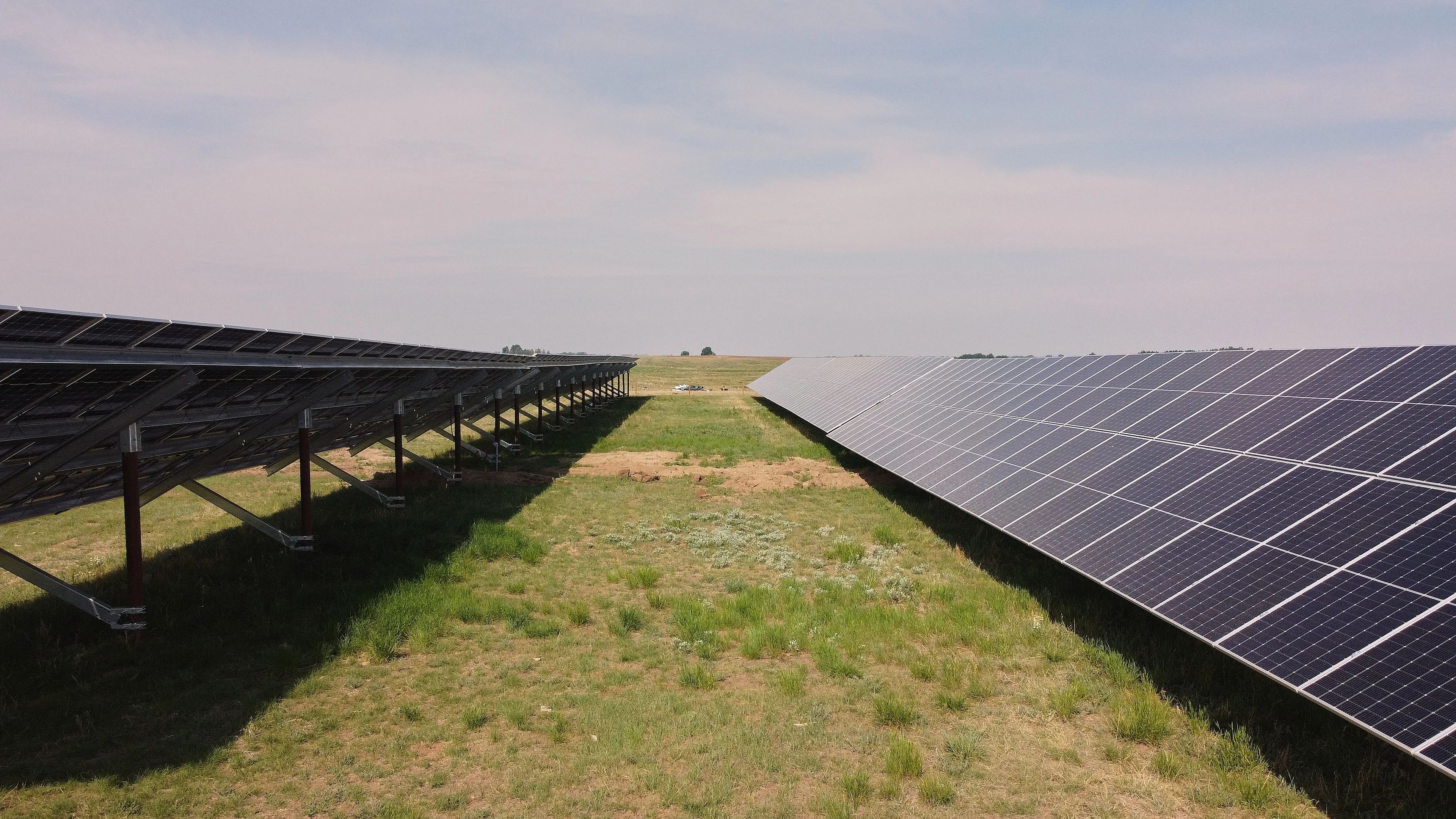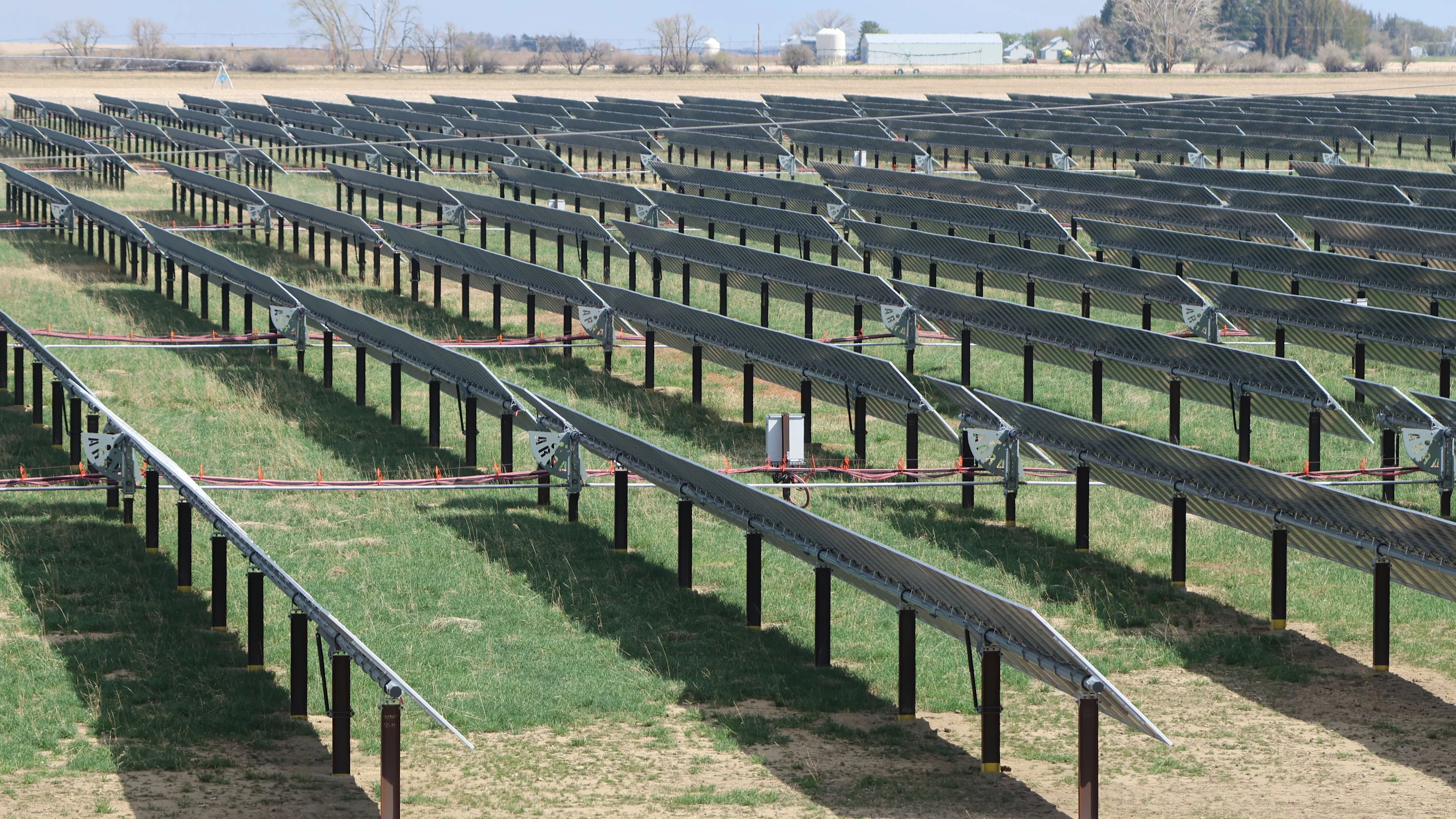
Renewable energy moratorium sends grim signals to Alberta students
Alberta Premier Danielle Smith’s unexpected seven-month ban on new renewable energy developments could have long-lasting implications for investments in the province. And it could send the message that educated young people studying to join the sector may need to look for work elsewhere.
Alberta’s seven-month moratorium on renewable energy developments is setting the stage for students to seek greener pastures. Announced earlier this year, the move quickly drew criticism from industry groups, non-profit organizations, and a slew of others.
Darren Paetz is the president of the Renewable Energy Design club (RED) at the University of Alberta. The group is composed mostly of engineering students who build small- and micro-scale renewable energy projects around campus, such as an off-grid, solar-powered greenhouse, and aim to learn from the experience.
“Basically every single one” of RED’s members is interested in working in renewable energy in the future, Paetz, also an undergraduate engineering student, told The Weather Network.
However, he added that, though the moratorium is unlikely to be in place when RED’s members graduate, Premier Danielle Smith’s decision could have lingering effects. In turn, these could cause students of the future to seek employment in renewables outside of Alberta.
“So, right now, the University of Alberta is training us, the next generation of really engaged, passionate, young future engineers who will go on to design renewable energy projects for a province. If those projects are jeopardized … future projects might be jeopardized by this move,” he said.
‘A lot of uncertainty’
Jason Wang, senior analyst working on the Pembina Institute's electricity program, said that the moratorium came “quite unexpectedly,” particularly for the companies and other organizations involved in renewable energy. “We had no idea that sort of announcement was coming,” he told The Weather Network.
“I think the overall feeling is that kind of a pause, with that sort of small amount of industry engagement, leads students like us to question the government's motivations,” he added.
He added that the province hasn’t established moratoriums on other types of developments in the past, adding to the confusion. Premier Smith has listed several reasons for the moratorium, including being asked to do so by energy regulators and a level of discontent with the federal government’s stance on natural gas.
Since 2019 alone, the renewable energy sector has invested around $4 billion in the province (or $5 billion, depending on the source). According to the Pembina Institute, the province’s move is impacting 91 renewable energy developments, and $25 billion worth of investments and jobs. Wang noted that these aren’t projects currently under construction, but rather projects that are somewhere in the process of getting started, like by applying for permits.
But, now, this moratorium “certainly creates a lot of uncertainty,” he said.
In an emailed response, the provincial government's Minister's Office of Affordability and Utilities wrote that the Alberta Utilities Commission will continue to process new and existing applications during the moratorium, and that all projects that have been approved or conditionally approved will not be impacted.
"Alberta leads the nation in the development of renewable energy projects with more than 3,400 megawatts of wind and solar under construction. This pause will ensure this growth will continue well into the future.”

Solar panels are seen in rural Alberta in the summer of 2023. (Rachel Maclean / The Weather Network)
‘Long-lasting implications’
According to Sara Hastings-Simon, an associate professor at the University of Calgary’s department of geoscience and director of the school’s master’s program in sustainable energy development, policy certainty is a huge factor for investors looking to build new developments in the province.
“I think that the biggest impact of the moratorium is really the signal that it sends about future developments of renewable energy in the province in Alberta,” she told The Weather Network.
The moratorium is likely to have near-term impacts, such as developers seeking to take their investments to other provinces or parts of the United States, she said. This already appears to be happening. But the decision could also slow the pace of investment in Alberta long term, and impact job opportunities, particularly for students.
“I think that it can build a lot of mistrust, [and] it can have really long-lasting implications,” Hastings-Simon said.
Young people may also be interested in aligning their careers with ways to combat climate change, she added. So the moratorium sends the signal that Alberta isn’t the place to pursue this kind of career.
READ MORE: What's next for net-zero and climate change in a post-election Alberta?
According to Paetz, the moratorium’s announcement didn’t prompt any of RED’s club members to immediately start looking toward other provinces that are looking to attract renewable energy investments, such as British Columbia or Ontario. However, if the Government of Alberta enacted similar measures in the future, he wouldn’t be surprised to see that happen.
Wang said that he would, ultimately, like to see the province roll back its moratorium. Meanwhile, Paetz said he’d like to see the province change its rhetoric around renewable energy. There’s been a long history of conflict between the province and the feds about net-zero targets and decarbonization in Alberta.
According to Paetz, If the provincial government wants to send a message that it’s taking positive steps towards these goals, it should send a clear message that it wants to keep future renewable energy workers inside its borders. Otherwise, “Alberta runs the risk of losing freshly trained young people.”
Thumbnail image: Solar panels now sit on the site of an orphaned well in a field near Taber, Alberta on May 25, 2023. Activists and experts say the existence of these inactive oil and gas installations -- often dug hundreds of meters (yards) below the surface in Alberta province -- is a ticking ecological time bomb for the vast country. (Photo by Mathiew Leiser/AFP via Getty Images)
WATCH BELOW: A plan for integrating solar panels into Canadian cropland












